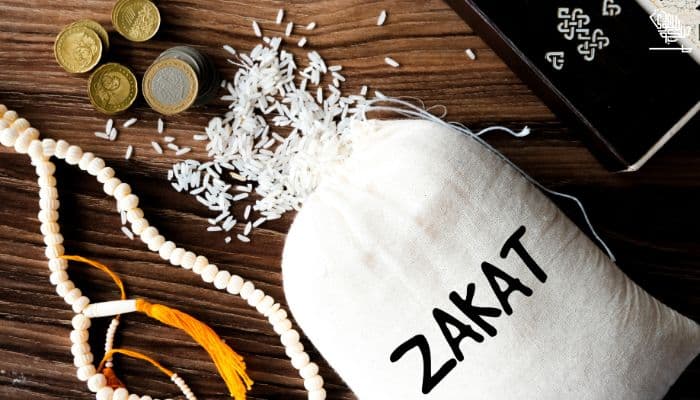Every year, Muslims with wealth exceeding a specific threshold must contribute a portion of it as Zakat. This practice facilitates the redistribution of wealth from the affluent to the less fortunate, fostering societal equilibrium. However, in contemporary times, determining Zakat obligations can be daunting.
This guide for calculating Zakat in 2024 is designed to simplify the process, ensuring individuals can quickly fulfill their duties.
What Is Zakat?
Zakat is an obligatory act of charity in Islam, where Muslims donate a portion of their wealth to those in need. It’s considered one of the five pillars of Islam and is mandatory for those who meet specific wealth criteria.
What is Nisab?
Nisab is the minimum wealth threshold for Zakat obligation. Zakat is due if your assets exceed it; otherwise, it’s not required. Initially set in gold and silver, modern calculations use their cash equivalents, obtainable online.
Gold’s Nisab is 3 ounces; silver’s is 21 ounces. While traditionally silver-based, some suggest gold due to silver’s reduced value. Other schools follow gold. Opting for silver can increase charity distribution.
Gold
The Nisab, by the gold standard, is 3 ounces of gold, which equals about 87.48 grams. To find its cash value, you can use online calculators. Just multiply the number of grams by the current market value of gold.
Silver
Nisab uses the silver standard of 21 ounces, approximately 612.36 grams. To find its cash equivalent, multiply the grams by the current market value of silver. Online calculators can help with this calculation.
In the Hanafi school of thought, the silver standard is commonly used to determine Nisab and Zakat eligibility. However, some contemporary scholars within this school suggest using the gold standard, given the high cost of living and the decreased value of silver today. Other schools typically follow the gold standard. You may opt for the silver standard if you prefer to distribute more charity.
Steps of Calculating Your Zakat
Step 1: Determine Eligible Assets
Zakat is typically calculated on specific assets, including savings, investments, gold, silver, and business inventory. Exclude personal belongings, primary residence, and necessities like clothing and furniture.
Step 2: Calculate Total Assets
Add up the total value of your eligible assets. This includes cash in hand, savings in bank accounts, stocks, bonds, gold, and silver.
Step 3: Deduct Liabilities
Subtract any outstanding debts, loans, or expenses from your total assets. Only the net amount is subject to Zakat calculation.
Step 4: Establish Nisab Threshold
Nisab is the minimum wealth a Muslim must possess before being obligated to pay Zakat. For 2024, the Nisab threshold is equivalent to the value of 85 grams of gold or 595 grams of silver.
Step 5: Calculate the Zakatable Amount
If your net assets exceed the Nisab threshold, you must pay Zakat. The standard rate is 2.5% of your total Zakatable assets.
The Bottom Line
Calculating Zakat in 2024 need not be complex. Follow these steps to fulfill your obligation effortlessly and positively impact through charitable contributions this year. Simplify your process and ensure meaningful giving to those in need.
Utilize available resources and tools to determine your Zakat amount accurately, making the process both manageable and fulfilling. Let’s contribute to building a better society by fulfilling our Zakat duties effectively and compassionately.
DISCLAIMER: The images/videos/logos showcased on this page are the property of their respective owners. This blog post is just for informational purposes. We provide credit and sources wherever possible. However, If you want your images/videos/logos to be removed, please contact us, and we will promptly address your concerns.

Rosa Gardens is a writer at Saudi Scoop, dedicated to delivering insightful and engaging content. With a keen eye for detail and a passion for storytelling, Rosa covers various topics that inform and inspire readers.




